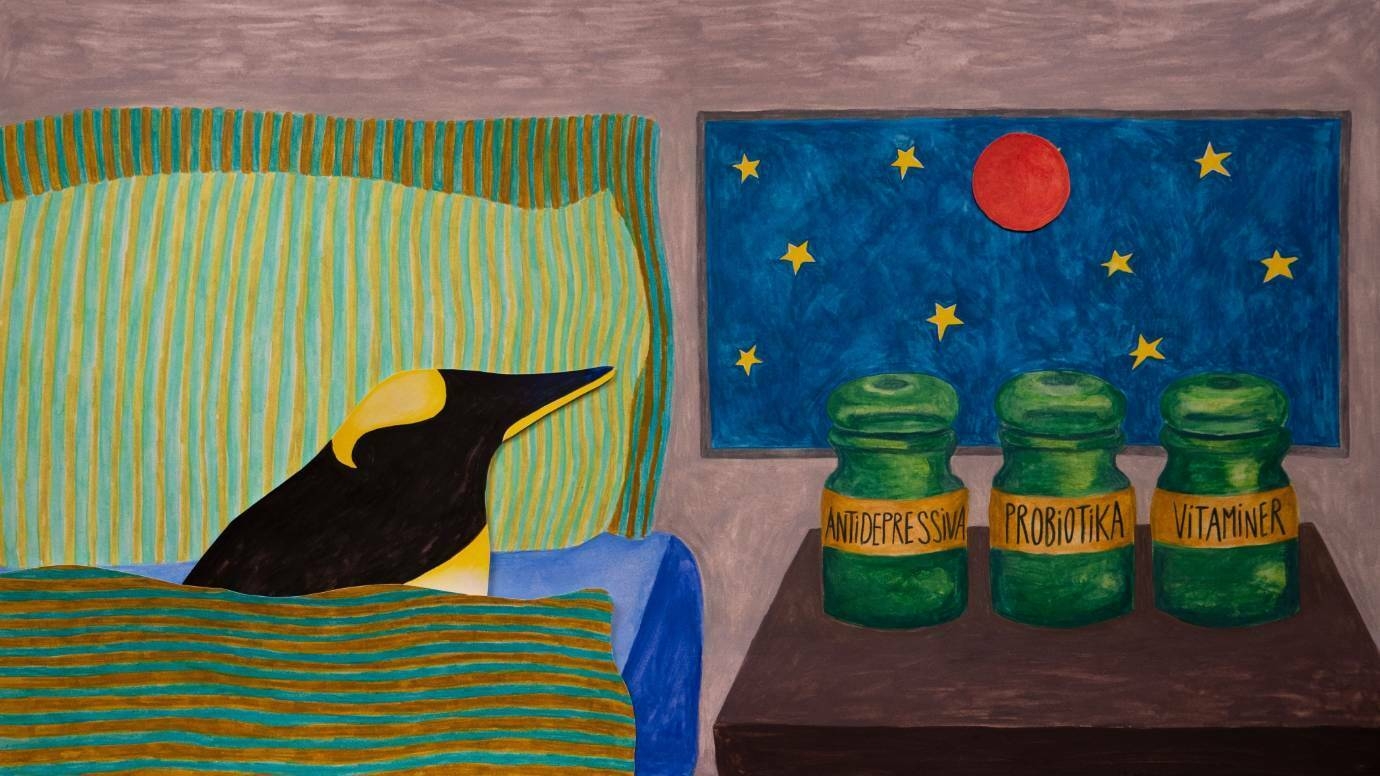Mathiasen examines the relationship between natural surroundings and mental health. She looks at the garden’s public, institutional and psychological space, both from a historical perspective and through her own experiences of dealing with mental illness.
The title of the exhibition is borrowed from the English word “folly”. Translated, the word means, among other things, folly, foolishness and madness. It is also used to describe decorative buildings without a practical function, such as pavilions in parks and gardens. Mathiasen deals with the variable meanings of the concept of folly and gardens that contain absurdities and contradictions unfold. She explores psychologically and environmentally influenced health conditions through different formats such as animation, drawing and sculptures.
Among other things, the artist shows four short stop-motion videos about a depressed penguin watching programs about gardening from the sofa. The penguin tries to work through his depression by going to therapy, gardening, composting and eventually buying a piece of land with a turtle friend. Just like the main character of the animation, voiced by Kaya Wilkins (also known as Okay Kaya), Mathisen does the same in this exhibition: she builds a garden.
The penguin also refers to the gardens associated with the psychiatric ward at Dikemark outside Oslo, which is the artist’s current hometown. History shows that a psychiatrist in the 30s brought two penguins from the South Sea with him to entertain his patients. The penguins could not stand being so far from their natural environment and soon died. This motif – both foolish (a folly) and tragic – inspired the main character of Mathiasen’s animations. Furthermore, this points to the artist’s childhood memories of building wooden penguins with her father as a pastime. The figures are brought out and frequent the exhibition’s constructions.
Mathiasen’s gardening grows through the imaginary and materializes in the physical, as an unpredictable path through childhood memories and social ecosystems such as friendship and family. The exhibition points to nature as an invariable figure in the life course and well-being of living beings. In and out of different dimensions in time, place and expression, cyclic carriers of what healing for physical and mental illness could possibly be propagate themselves.




